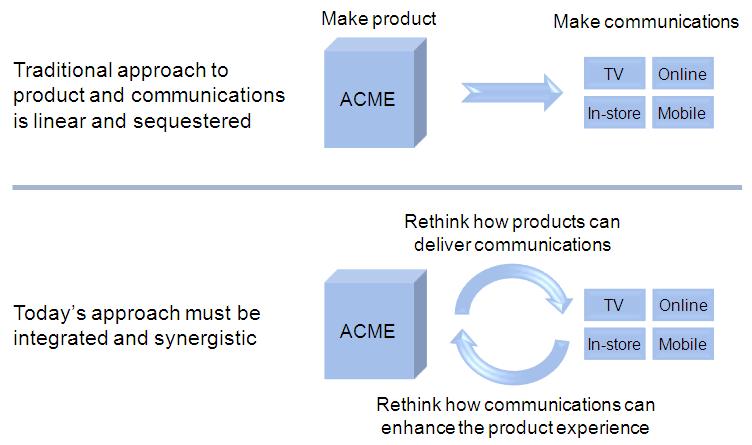Can Your Product Walk And Talk?
Update From The New Brand Experience Lab
The inspiration for my first report, “Let Your Product Do The Talking,” was that marketers rely too much on communications to build their brand. Using consumer trends from Forrester’s Technographics Survey, I identified that while consumers are tuning out marketing messages, they are actually seeking out more product experiences.
In the future, I believe that companies will successfully build their brands by:
- Rethinking how products can deliver communications with baked-in advertising, like Dyson’s bladeless fans or Method’s pump-action laundry detergent. Both are great examples of products that were reinvented to deliver on the brand promise so exceptionally well that they don’t really need any explanation from advertising. Like their vacuums, the Dyson air multiplier is an innovation of form and function. Visually the product speaks to the consumer because it looks nothing like a fan. The bladeless design makes it simple for the consumer to translate how it is both safer and easier to clean. Finally, once it's turned on, the consumer experiences the benefit of a smoother stream of air than fans with traditional blades. Method’s latest laundry detergent certainly speaks for itself when it comes to delivering on all three aspects of the brand mission. First, the smaller, sleeker bottle is an immediate signal to the consumer that the brand is environmentally-friendly. The bottle itself is a fraction of the size of a typical pour-spout detergent thanks to the ultra-concentrated formula made from 95% natural and renewable ingredients. Second, the pump-action design tells the consumer that it will be easier, and less messy, to use the detergent. And last but not least, the product is designed to speak to the consumer in a new way, saying "I'm not your typical home-care product that you need to hide in your cabinet."
- Rethinking how communications can create product experiences instead of just delivering brand messages, like the Virgin America “Day in the Cloud” promotion or the Zippo lighter app. Virgin America’s entire promotion was built around getting passengers to engage in the product experience, complimentary on-board Wi-Fi, through a highly entertaining virtual scavenger hunt. But what I liked most about the event is that it provided the social networking tools for participants to immediately share their product experience with friends during the moment of truth. Had it waited to reach out to passengers until they got home, the event wouldn’t have generated anywhere near $1 million in earned media. For me, the Zippo lighter app still stands out as one of the most strategically brilliant examples of digitally expanding the product experience. Not only does the lighter app deliver on the company’s brand promise to “create a wind proof flame” better than the company's actual products, but it put a virtual Zippo product in the hands of millions of nonusers.
My Questions To You
What are your favorite examples of products that have reinvented or redesigned themselves to do their own talking, instead of just relying on advertising?
Beyond traditional products, can you think of services or online brands that are doing their own talking?
